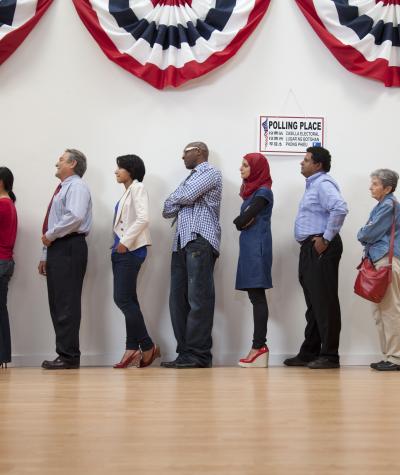Strict Photo ID Prevented Many from Accessing the Polls in 2016 Election
Wisconsin Strict Voter Photo ID in the 2016 Election
In May 2011, Wisconsin Governor Scott Walker signed a bill strictly requiring all voters to present certain photo identification at the polls, following a discouraging trend of states restricting access to the polls.
We do not know how exactly many people in Wisconsin lacked the required photo ID before the election but the number is far from insignificant. One estimate indicates that 300,000 eligible voters lacked the required photo ID – or nine percent of the electorate. The presidential election in that state was decided by a margin of 22,000 votes.
What we do know now is that Wisconsin legislators failed to keep their promise that “not a single voter in the state [would be] disenfranchised by the ID law.” Reporters have collected many personal stories from 2016 eligible would-be voters who struggled to meet the new requirements and therefore were turned away from the polls.
Moreover, this unnecessary disenfranchisement of eligible voters did not fall evenly on all communities. Post-election reports suggest that the people that encountered the greatest challenges due to the Wisconsin voter ID law in the 2016 election appear to be students, minority communities, the disabled and the elderly. The racial gap in Wisconsin shows the disproportionate impact these law have on minority voters. African-American voters in Wisconsin were 1.7 times as likely as white voters to lack a driver’s license or state photo ID. Latino voters were 2.6 times as likely as white voters to lack proper ID, according to The Nation.
Wisconsin is part of a nationwide trend of legislators attempting to justify strict voter photo ID using ever widening, increasingly dubious, and deeply cynical logic. Wisconsin legislators argued that the new restriction was necessary to protect against in-person voter impersonation fraud. But the Milwaukee Journal-Sentinel reported at the time that only 20 cases of voter fraud were found in the November 2008 election, none of which involved people voting in someone else’s name. In the words of U.S. District Judge James Paterson: “The Wisconsin experience demonstrates that a preoccupation with mostly phantom election fraud leads to real incidents of disenfranchisement, which undermine rather than enhance confidence in elections, particularly in minority communities. To put it bluntly, Wisconsin’s strict version of voter ID law is a cure worse than the disease.”
Nonetheless, legislators continue to push restrictive bills under the guise of preventing fraud. 29 states in 2017 alone have introduced more than 85 bills restricting access to registration and voting.
Real Consequences for Citizens
While the preoccupation with election fraud has been ‘mostly phantom,’ the consequences of restrictive voting laws for voters have been all too real.
Take Johnny Randle, a 74-year old African-American resident of Milwaukee, who petitioned the Wisconsin DMV to grant a free ID card to vote since he was not able to pay for a new copy of his birth certificate. The Nation reported on how Johnny was put through a five-month “adjudication process,” which resulted in a denied request because his middle name on his original birth certificate did not match the spelling he had used his entire life. This is hardly an exceptional case.
Gladys Harris, another elderly Milwaukee citizen, was unable to vote in November because “she had lost her driver’s license a few days before,” according to an account she gave the Wisconsin State Journal. She came away from the experience feeling alienated from the political process – stating her belief that “the state law was intended… to prevent blacks like her who don’t have a car and rely on public transportation from voting.” She felt that she had been unfairly denied the right to vote because her vote would not be counted unless she was able to go to a local DMV office for a replacement card and then return with it to a county election office within three days of the election.
Overall, the city of Milwaukee saw a decline of about 41,000 voters in the 2016 election, compared to 2012. This is nearly half the percentage of the decline of about 91,000 in the state overall. While there could be many causes for this decline, the implementation of strict photo ID requirements, which disproportionately affect minority voters in Milwaukee, almost certainly played some role.
Wisconsin was not the only state that put in place new photo voter ID laws for the presidential election in 2016, but Wisconsin stood out in part because of the state’s glaring failure to properly educate voters. A ProPublica report shows “Wisconsin failed to appropriate funds for the public education campaign” required by law to educate voters about what forms of ID are acceptable and where they can obtain them. The lack of public education only exacerbates the harms of these restrictions, leading voters to stay home afraid they may not be able to meet the new requirements.
